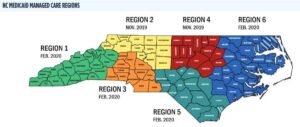A tragic dog attack on a five-year-old child in December 2023 has reignited scrutiny of how local authorities track and manage dangerous and potentially dangerous dogs in central North Carolina. CBS 17’s investigation reveals significant gaps in oversight and enforcement, leaving communities vulnerable.
Wake County: Hundreds of Dog Bites, Limited Notifications
In Wake County alone, authorities recorded more than 1,100 dog or puppy bites from 2023 through November 1, 2024. During that period, only nine dogs were officially deemed dangerous or potentially dangerous—a small fraction of the incidents. Notably, this data excludes reports from Cary, Raleigh, Garner, and Holly Springs, underscoring an incomplete picture of the issue.
Wake County Animal Control Supervisor Clarence Kinley explained the multi-step process for declaring a dog dangerous, which begins with a warning and escalates based on repeated or severe incidents.
“A dog is dangerous if it has done serious damage to an animal or person, which means hospitalization, stitches, or death,” said Kinley.
Kinley also shared his personal experience of being bitten by a dog while attempting to load another animal into his vehicle, highlighting the risks faced even by trained professionals.
One key gap: neighbors are not notified when a dog is declared dangerous. Unlike other states, Wake County does not require permits or maintain address-specific records in its database of dangerous dogs, leaving residents uninformed about potential threats nearby.
Durham and Cumberland Counties: Challenges Persist
Durham County reported five dangerous dogs and 58 potentially dangerous dogs from 2022 through October 2024. Alarmingly, some of these dogs reside at the same addresses, raising concerns about repeat offenders and inadequate safeguards.
In Cumberland County, where a German Shepherd severely injured five-year-old Brenna Mata last December, systemic failures are evident. The same dog had been declared dangerous after biting another child in 2020. Despite this, its permit expired in November 2022 and was not renewed before the attack.
Courtney Mata, Brenna’s mother, is now pushing for reforms alongside her husband, including stricter penalties for reckless dog owners and better notification systems.
“The system we have now depends on the loyalty of the owners,” Mata said. “That’s a broken system. This time, that didn’t happen.”
The lack of a centralized, accessible database of dangerous dogs compounds the issue. Cumberland County officials admitted they cannot easily provide data on dangerous dogs or their locations, citing database limitations and the burden of manually compiling records.
Advocating for Change
For families like the Matas, the consequences of these gaps in oversight are deeply personal. Brenna’s injuries required extensive medical care, and the family is left wondering how the system failed to protect their child.
“I want everyone to try to imagine if that was your child and how you would feel,” Mata said. “What would you want to do if your child was hurt like that or, heaven forbid, if they killed your child?”
Their advocacy focuses on creating a registry for dangerous dogs, ensuring communities are informed, and holding negligent owners accountable.
The Bigger Picture
North Carolina’s approach to managing dangerous dogs varies by county, with many relying on owner compliance and under-resourced animal control agencies. Other states have implemented stricter measures, including mandatory permits, registries, and neighbor notifications, but such reforms have yet to take hold in North Carolina.
As incidents like Brenna’s highlight the need for systemic change, local officials face growing pressure to adopt stronger protections for their communities. Until then, residents must navigate a fragmented system that too often leaves them in the dark about the dangers in their neighborhoods.













